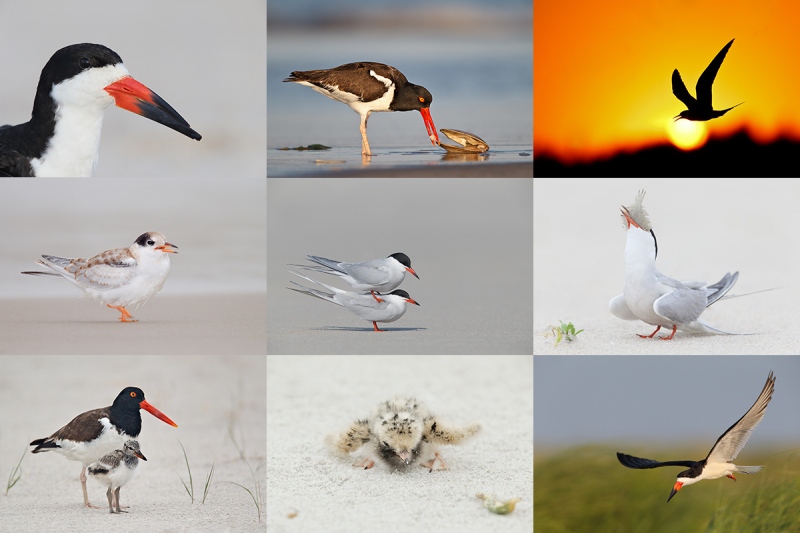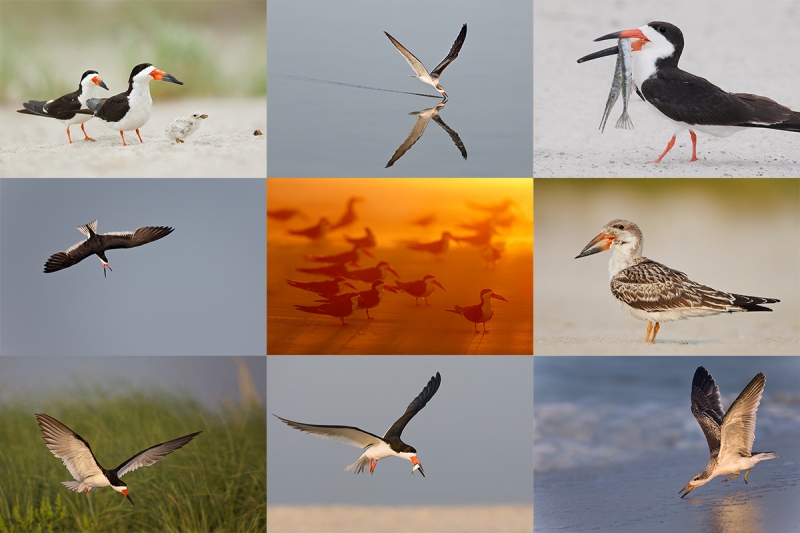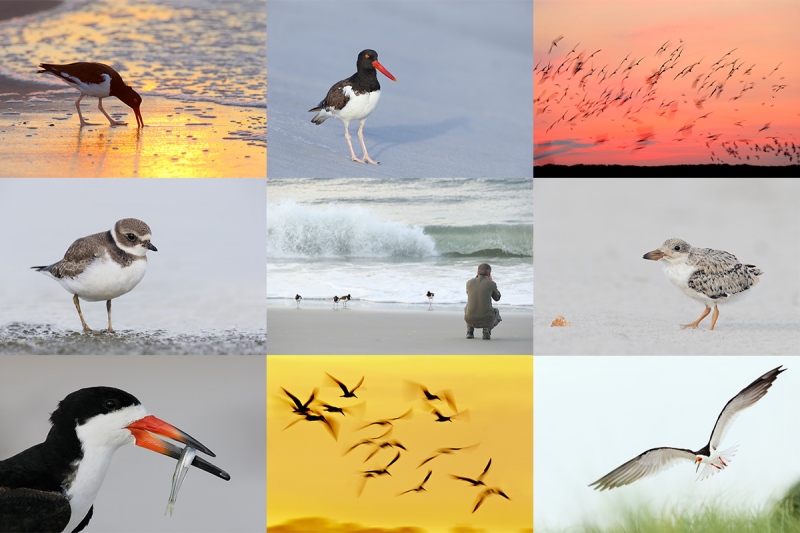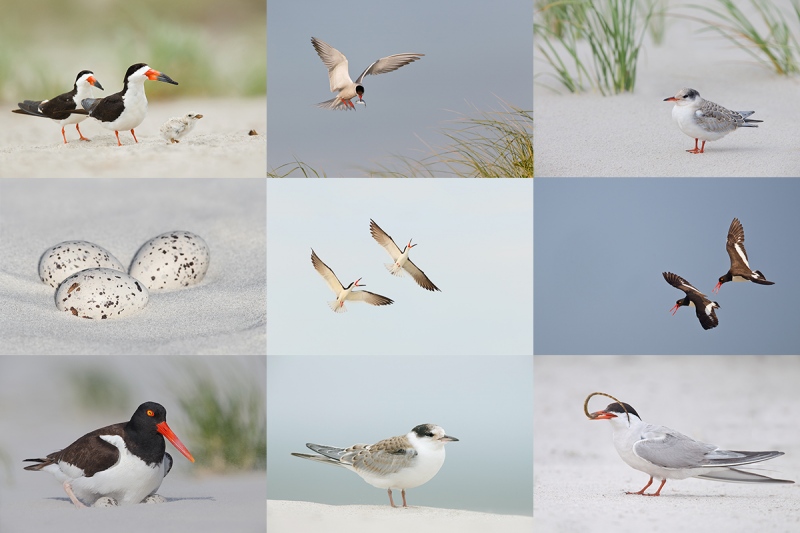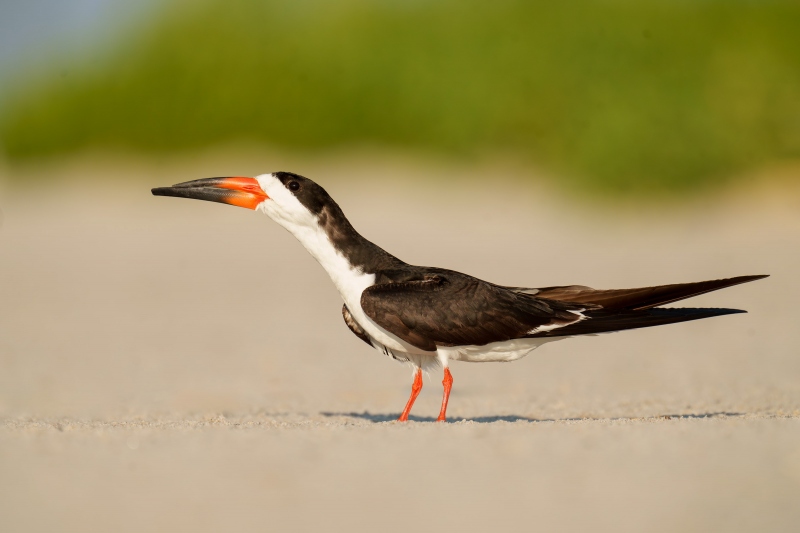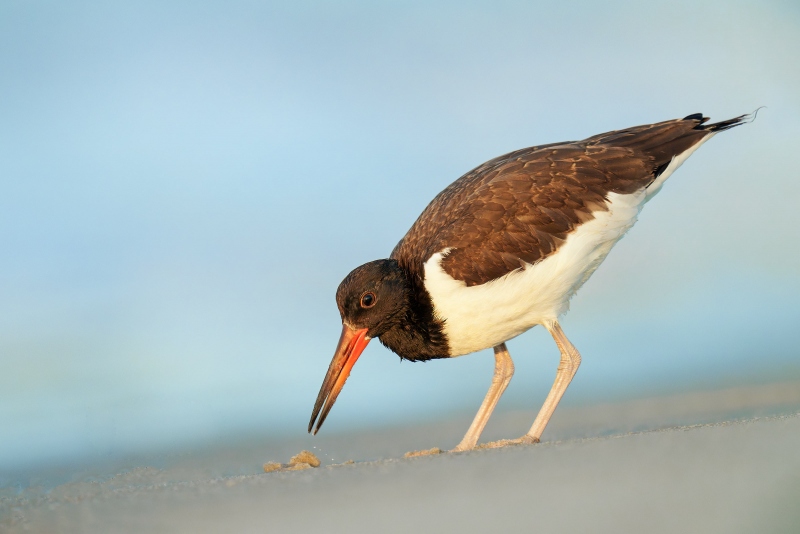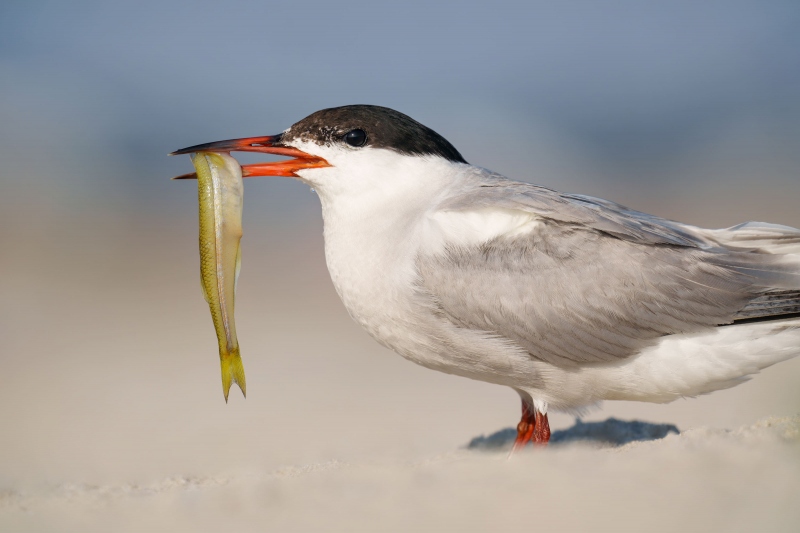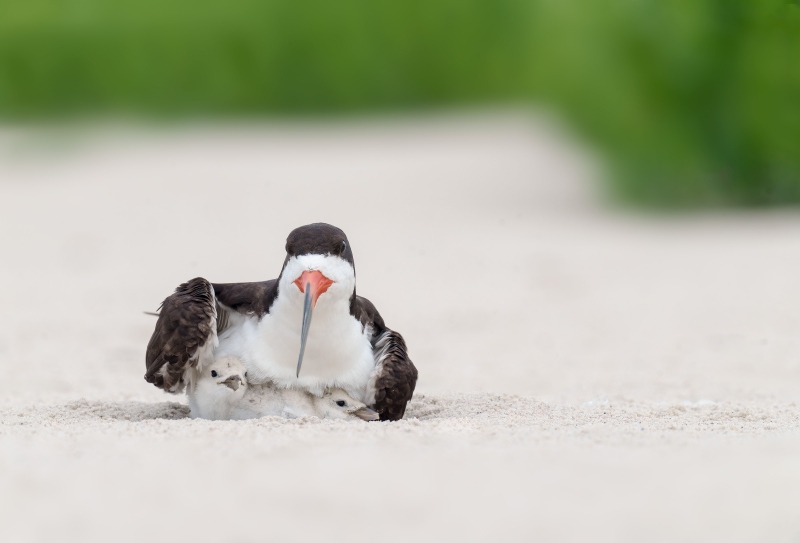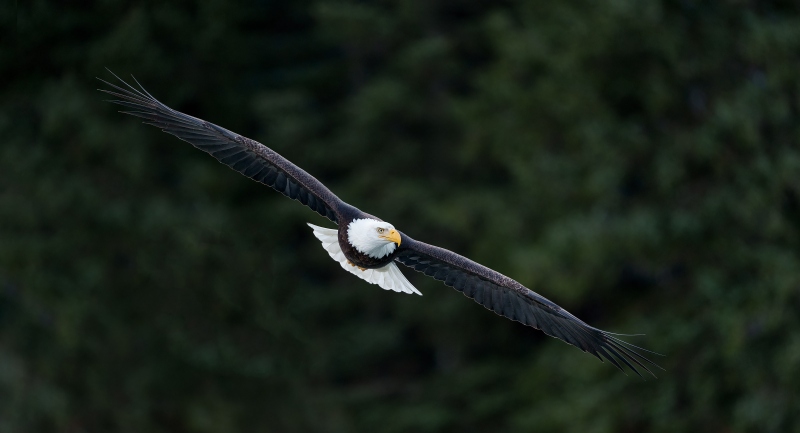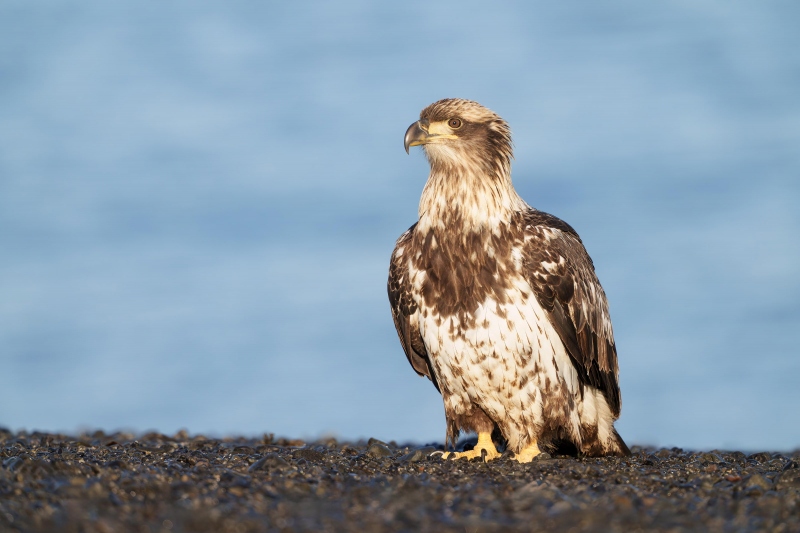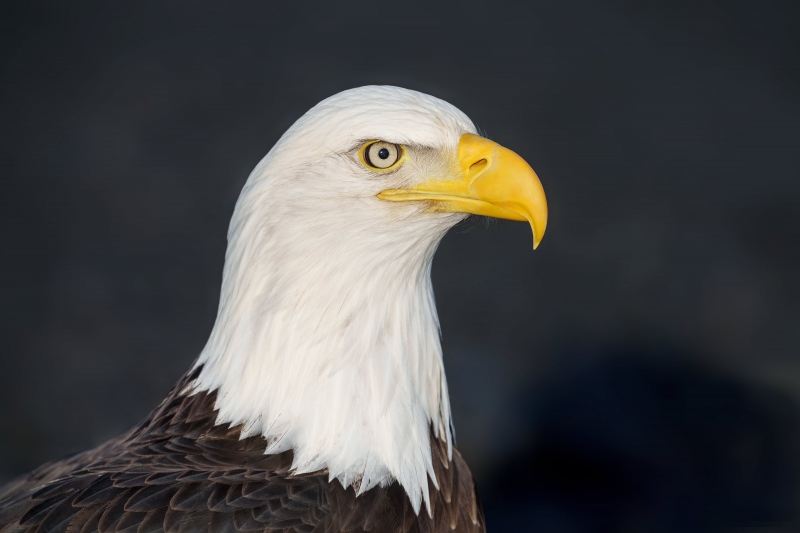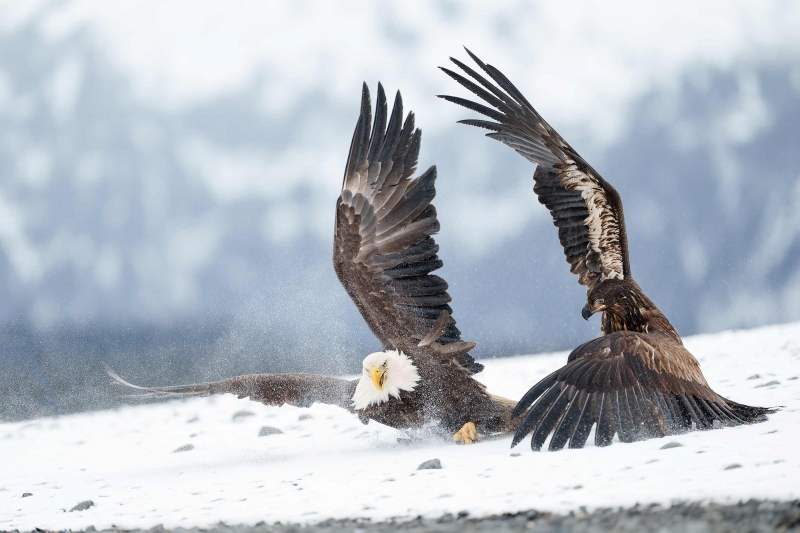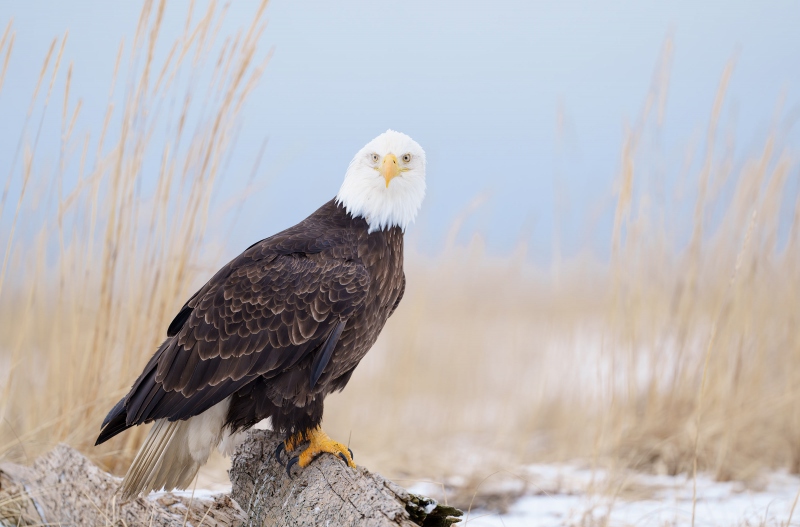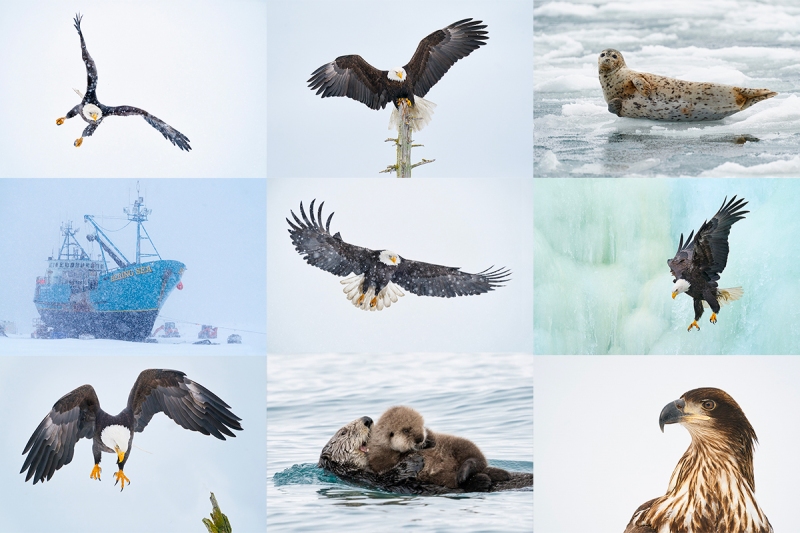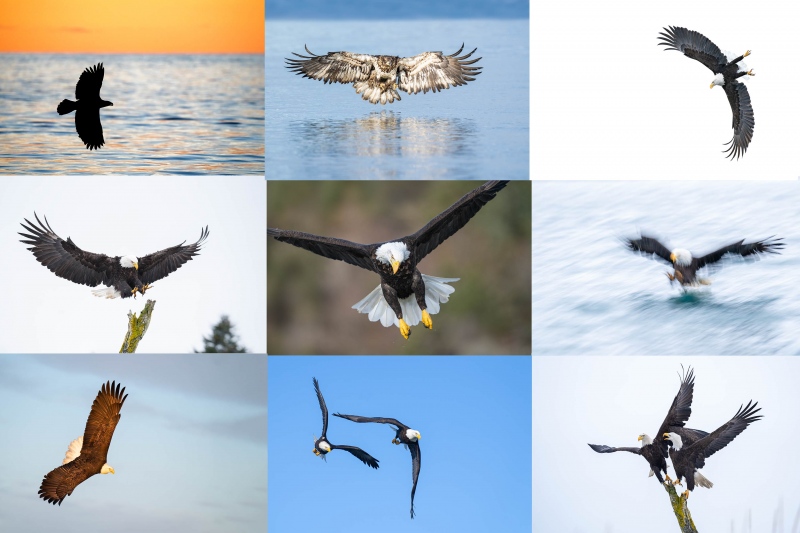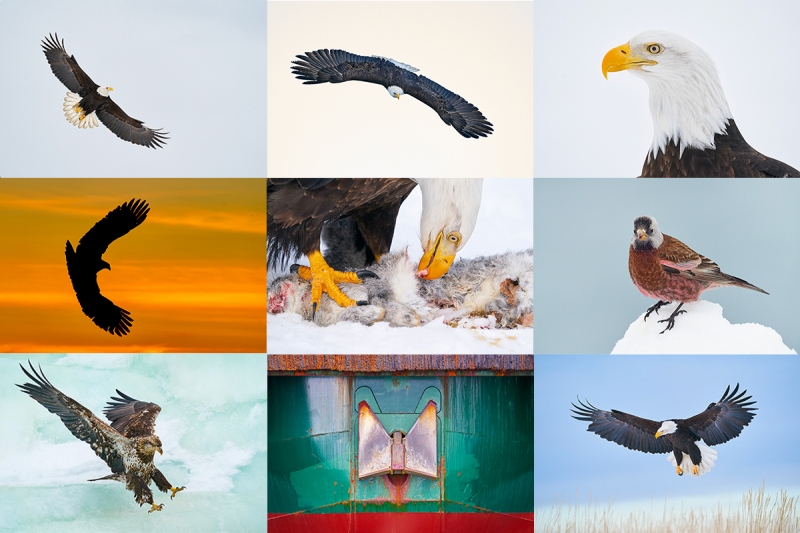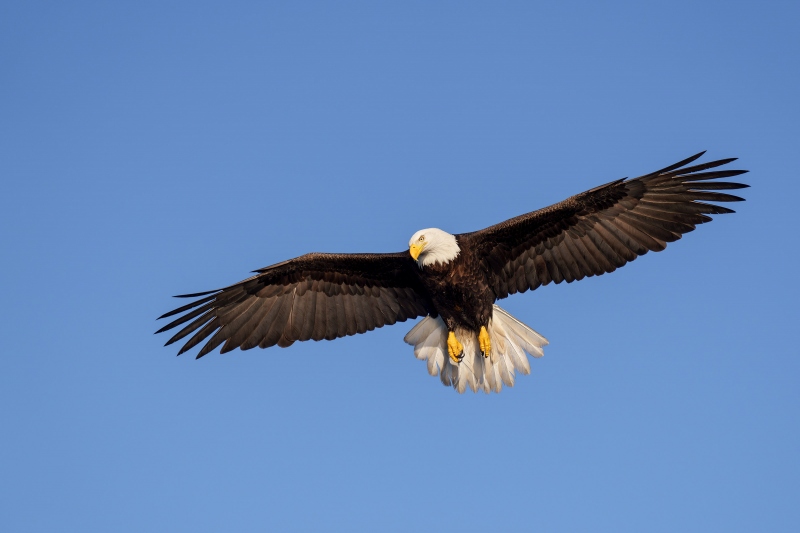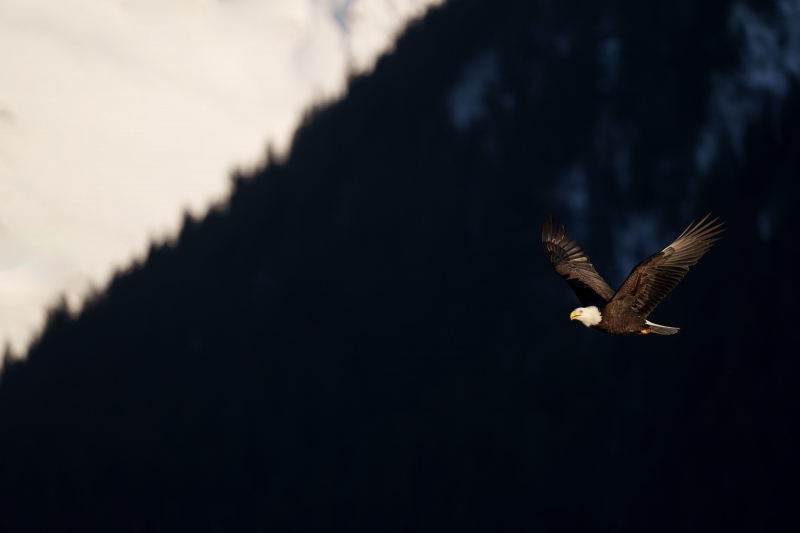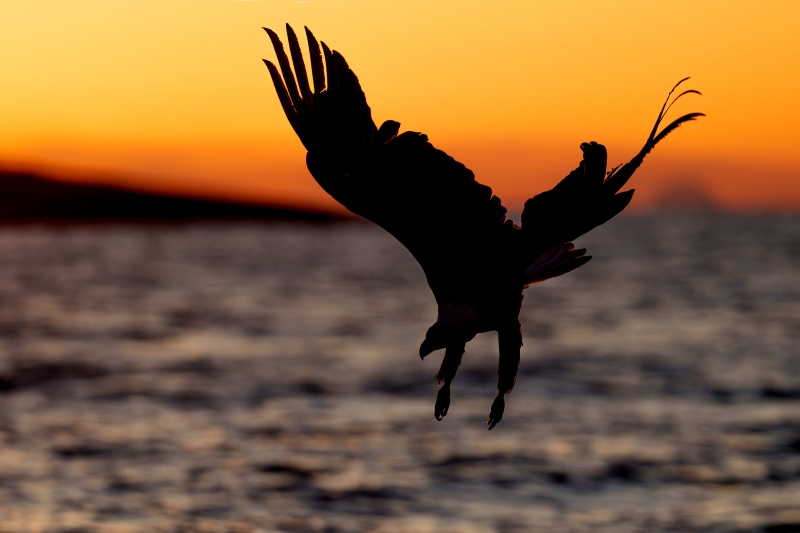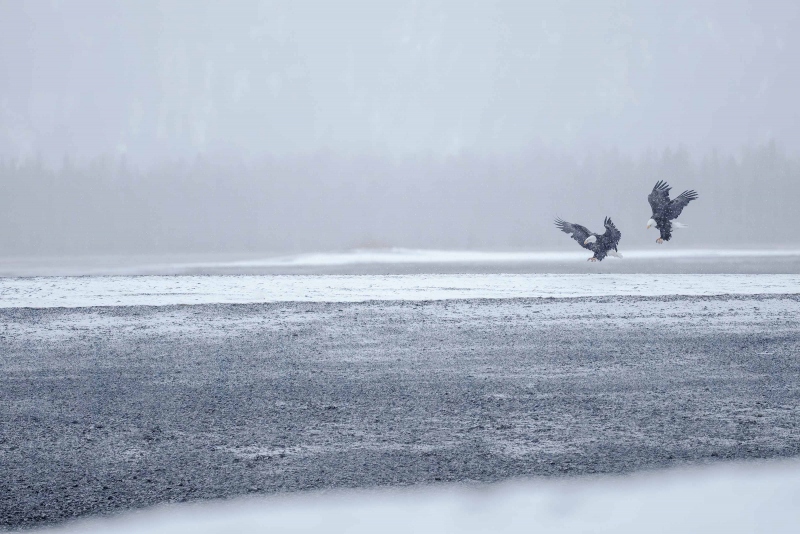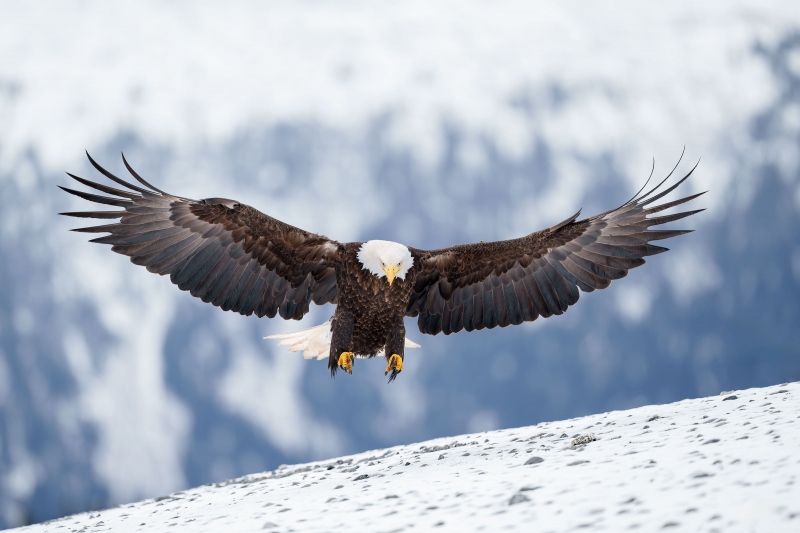March 7th, 2024 Announcing the 2024 Nickerson Beach IPT
|
|
Join me to photograph Black Skimmers, Common Terns, American Oystercatchers, and more!
|
The Summer 2024 Nickerson Beach 3 1/2 day Terns, Skimmers, & Oystercatchers IPTs
July 29 – August 1, 2024. 3 1/2 days: Afternoon session on MON 29 July through the afternoon session on THURS 8 August: $2099.00. Limit: 6. Openings: 5
August 5-8 2024. 3 1/2 days: Afternoon session on MON 5 August through the afternoon session on THURS 1 August: $2099.00. Limit: 6.
Join me at Nickerson Beach Park this summer to photograph Black Skimmers, Common Terns, and American Oystercatchers. The trip is timed so that we should get to photograph tiny chicks as well as fledglings. There will be lots of flight photography including adults flying with baitfish and mole crabs. Creating great images of the chicks being fed is a challenge but I will do my best to help you toward that end. We will get to photograph a variety of breeding behaviors including courtship, sitting on (incubating) eggs, chick feeding, and more. We may get to photograph pre-dawn and early evening blastoffs. There is generally great afternoon skimmer flight photography that includes frequent midair battles sunny days. And with luck, we might even see a few tiny chicks in addition to fledged and flying young. We will also get to photograph the life cycle of American Oystercatcher. This will likely include nests with eggs and small chicks, young being fed, and surely a few fledglings.
Nesting Piping Plover is also possibly. There will be lots of gulls to photograph; most years I am able to find a few lesser black-backeds of varying ages in addition to the Herring, Ring-billed, and Great Black-backed Gulls. You will learn to identify and age the various gull species. There will likely be some Willets feeding along the surf and with luck we might get to photograph a handsome juvenile or two. In addition to the locally breeding shorebirds, we will likely get to see some southbound migrant arctic-and sub-arctic breeding shorebird species such as Sanderling, Semipalmated Plover, and maybe even Red Knot.
|
|
Clockwise from upper left around and back to center: Black Skimmer pair with chick; Black Skimmer fledgling skimming; Black Skimmer with large needlefish; Black Skimmer large chick; Black Skimmer fledgling taking flight; Black Skimmer adult with killifish; Black Skimmer adult landing near nest; Black Skimmer in midair chase; and Black Skimmers at dawn in the red light district.
|
Afternoon sessions will run from 5:30 till sunset (assuming that entry policies are as they were in 2023. Morning sessions will run from pre-dawn till about 9:00 or 9:30am, roughly 3 1/2 hours.
Many folks head home feeling that while our time in the field was fabulous and productive, that the working brunch sessions were even more valuable. During image review you will learn to select the best images from several thousand made with your 20- and 30 fps (or 120 fps!) camera bodies. And we will process a few images and distribute the screen capture videos for you to learn from after the trip. And all IPTs offer follow-up image critiques.
Change your life: sign up for this IPT today. Please shoot me an e-mail if you would like to explore the possibility of renting some Sony gear (including an a1) from me.
|
|
Clockwise from upper left around and back to center: Adult American Oystercatcher foraging at sunrise; Adult American Oystercatcher posing on clean sand; predawn skimmer flock blur; Black Skimmer large chick; Black Skimmer landing at nest on cloudy day; Black Skimmer large chick; Black Skimmer sunrise group blur; Black Skimmer adult with Atlantic Silversides; juvenile Semipalmated Plover, and photographer with oystercatcher family.
|
Some of What You Will Learn on a Nickerson Beach IPT
- 1- The basics and fine points of digital exposure; how to get the right exposure every time after making a single test exposure (or before if you are using SONY gear).
- 2- How and why to work in Manual mode (even if you’re scared of it).
- 3- How to approach free and wild birds without disturbing them.
- 4- Lots about bird behavior and how to use that knowledge to help you create better images.
- 6- To spot the good and great situations and to choose the best perspective.
- 7- To see, evaluate, and understand the light.
- 8- To design pleasing images by mastering your camera’s AF system.
- 9- And perhaps most importantly, to evaluate wind and sky conditions and understand how they affect bird photography. You will learn where and when to be (and why).
- 10- More than you could ever imagine.
|
|
Clockwise from upper left around and back to center: Black Skimmer pair with chick; Common Tern landing at nest with small baitfish; large Common Tern chick on pristine beach; American Oystercatchers courtship flight; Common Tern with pipefish; Common Tern fledgling; American Oystercatcher on eggs in high wind; American Oystercatcher nest with three eggs; and Black Skimmer midair battle.
|
The Details
We will be on the beach very early to enjoy sunrise. The morning sessions will run about 3 1/2 hours. Afternoon sessions will begin at 5:30 and run till sunset. There is never a set schedule on an IPT — we adapt to the conditions. On cloudy mornings with the right wind, we may opt to photograph till 11:30am or so and skip the afternoon session. That especially when the afternoon weather is looking iffy.
There will be a Photoshop/Image Review session before and after brunch (included) each full day. That will be followed by Instructor Nap Time. Each of these IPTs will run with only a single registrant as I do not like disappointing anyone. The best airports are JFK or Islip (if you have lots of Southwest points). Once you register, you will receive an e-mail with lodging information. Do know that it is always best if IPT folks stay in the same general area (rather than at home or at a friend’s place a good distance away).
Folks attending this IPT will be out in the field ridiculously early and stay out late to take advantage of sunrise and sunset colors; this is pretty much a staple on almost all BIRDS AS ART Instructional Photo-Tours. Doing so will often present unique photographic opportunities, opportunities that will be missed by those who need their beauty rest and those who need to get home for a proper dinner. I really love it when I am leaving the beach at 9:00am on a sunny morning after a great session just as a carful or two of well-rested photographers are arriving … We may be getting our feet wet on occasion, especially in the mornings, but those who wish to keep their feet 100% dry can do so.
Your $699 deposit is due now. Credit cards are OK for that. You can register by calling Jim or Jennifer during weekday business hours at 863-692-0906 with a credit card in hand. Once you leave a deposit, you will receive an e-mail with your balance statement and instructions for sending your balance check. Those who wish to pay for the trip in one fell swoop via check may do so by making the check out to BIRDS AS ART and then mailing it to BIRDS AS ART, PO BOX 7245, Indian Lake Estates, FL 33855. You will receive a confirmation e-mail with detailed instructions, and clothing and gear advice right after you register. Please shoot me an e-mail if you plan to register or if you have any questions.
IPT veterans and couples or friends signing up together may e-mail for discount information.
My Call
Though I loved the background and the clean subject in Image #1, Bald Eagle in flight with spruce tree background, my very favorite was Image #4, Adult and young Bald Eagle squabbling.
Your Call?
Which of today’s four featured Nickerson Beach images is the strongest. Why?
What’s Up?
Today is Thursday 7 March 2024. I will be receiving a FedEx package today from Bedfords: in it will be my very own Sony 300mm f/2.8 lens and a Sony A9 III. I will be heading to Stick Marsh tomorrow as the sky conditions and wind direction are looking pretty good. If you would like to join me for a morning In-the-Field Session, stop what you are doing and shoot me an e-mail or try me on my cell at 863-221-2372.
If you plan on purchasing a Sony a9 III Mirrorless Camera (or anything else for that matter), please remember to use or write for either my Bedfords discount code or my B&H affiliate link. Folks who use one of my two affiliate links to purchase the a9 III will receive my .DAT settings (the complete camera set-up) along with a Buttons and Dials Guide.
I have a ton of work to do today. Wherever you are and whatever you are doing, I hope that you are having fun too.
If you would like to enjoy some incredible world class photography and photographic instruction, do yourself a favor and grab one of the two remaining spots on each of the two 2025 Homer Bald Eagle IPTs. Better yet, save $1000.00 by signing up for both! It will be my last ever Homer trip … Both trips will surely fill soon. Scroll down for the details.
Please remember to use the B&H links that are found on most blog pages and to use the BIRDSASART discount code at checkout when purchasing your new gear from Bedfords to get 3% back on your credit card and enjoy free second-day air FedEx. Please, also, consider joining a BAA IPT. You will be amazed at how much you will learn!
If an item — a Delkin flash card, or a tripod head — for example, that is available from B&H and/or Bedfords, is also available in the BAA Online Store, it would be great, and greatly appreciated, if you would opt to purchase from us. We will match any price. Please remember also to use my B&H affiliate links or to earn 3% cash back at Bedfords by using the BIRDSASART discount code at checkout for your major gear purchases. Doing either often earns you free guides and/or discounts. And always earns my great appreciation.
The First Ever BIRDS AS ART Lens Guide
Impressed by my Sony FE 300mm f/2.8 GM OSS Lens (Sony E) images from the last three posts? Use either my Bedfords or B&H affiliate link to purchase your Sony 300mm f/2.8 GM lens and shoot me your receipt via e-mail and request a copy of the first-ever BAA Lens Guide. This short guide will be published sometime in late March as I have a lot more to learn about this amazing new lens.
Canon EF 600mm f4/L IS II Lens (with extras!)
Ralph Fletcher is offering a Canon EF 600mm f4/L IS II lens in excellent condition (with extras as noted) for $4,999.00. The glass is perfect with no scratches or blemishes. The sale include the original carrying case, a lens coat, the rear lens cap, the front lens cover, a Canon 1.4X III TC, a Canon 2X III TC (both in excellent condition), a Wimberley AP 602 Replacement Foot for Canon Long Telephoto Lenses (a $79.00 value), and insured ground shipping via major courier to lower-48 US addresses. The locking knob on the lens hood has been repaired. The lens strap is not included in the sale.
Please contact Ralph via e-mail
The 600mm f/4 lenses have been the state of the art super-telephotos for birds, nature, wildlife, and sports for many years. When I was using Canon and could get it to my location, my 600 II was always my go-to weapon. It is fast and sharp and deadly alone or with either TC. With both the EF 600mm f/4L IS III and the RF 600mm f/4L IS going for $12,999.00, and used 600mm versions IIs very hard to find, you’d do well to grab Ralph’s lens ASAP. Add a Canon Mount Adapter EF-EOS R to use this lens with your Canon mirrorless camera. artie
|
|
|
This image was created on 11 August 2023 at Nickerson Beach Park, Lido Beach, NY. Seated behind my lowered, no-longer available Induro GIT 304L tripod/Levered-Clamp FlexShooter Pro-mounted Sony FE 600mm f/4 GM OSS lens, the Sony FE 2.0x Teleconverter, and The One, the Sony Alpha 1 Mirrorless Digital Camera). The exposure was determined via Zebra technology with ISO on the thumb dial. ISO 1000. 1/1600 sec. at f/8 (wide open) in Manual mode. When evaluated in RawDigger, the raw file brightness was determined to be perfect. AWB at 4:22:55pm on a sunny afternoon.
Tracking: Expand Spot S/AF-C with Bird-Eye/Face Detection enabled performed perfectly. Click on the image to enjoy the high-res version. Be sure to click on the image to enjoy a high-res version.
Image #1: Black Skimmer displaying
|
The Nickerson Beach Target Species
Black Skimmer is the #1 target species at Nickerson during July and August. June is best for Common Tern breeding behavior, and the oystercatchers get started far earlier than the terns (like right now!) The beauty of the breeding season at Nickerson is that it is staggered. In summer, with all three species, you might see copulations, chick feedings, tiny chicks, and fledged chicks on any given day. It is not uncommon the see a few pairs of oystercatchers sitting on eggs into August.
|
|
|
This image was created on 12 August 2023 at Nickerson Beach Park, Long Island, NY. I used the knee-pod technique with the handheld Sony FE 600mm f/4 GM OSS lens, with the Sony FE 1.4x Teleconverter, and The One, the Sony Alpha 1 Mirrorless Digital Camera). The exposure was determined via Zebra technology with ISO on the thumb dial. ISO 3200. 1/250 sec. at 5.6 (wide open) in Manual mode. When evaluated in RawDigger, the raw file brightness was determined to be dead solid perfect. AWB at 6:25:31am on a mostly sunny morning.
Tracking: Expand Spot S/AF-C with Bird-Eye/Face Detection enabled performed perfectly. Click on the image to enjoy the high-res version. Be sure to click on the image to enjoy a high-res version.
Image #2: American Oystercatcher juvenile finishing mole crab breakfast
|
Juvie Oystercatchers
When oystercatcher chicks are tiny, they often remain with one adult while the other parent flies down to the ocean to capture food for the chicks and then flies back to the chick to feed it. As they get larger, they make the short trip to the Atlantic, hang with the adults, and get fed. Once they are fledged, they begin catching some prey items on their own at times, but are still fed often by mom or dad.
|
|
|
This image was created on 12 August 2023 at Nickerson Beach Park, Long Island, NY. I used the no-longer available Induro GIT 304L tripod/Levered-Clamp FlexShooter Pro-mounted Sony FE 600mm f/4 GM OSS lens, the Sony FE 2.0x Teleconverter, and The One, the Sony Alpha 1 Mirrorless Digital Camera). The exposure was determined via Zebra technology with ISO on the thumb dial. ISO 800. 1/1600 sec. at f/8 (wide open) in Manual mode. When evaluated in RawDigger, the raw file brightness was determined to be dead solid perfect. AWB at 8:03:52am on a then sunny morning.
Tracking: Expand Spot S/AF-C with Bird-Eye/Face Detection enabled performed perfectly. Click on the image to enjoy the high-res version. Be sure to click on the image to enjoy a high-res version.
Image #3: Common Tern with spearing (Atlantic Silversides) for chick
|
Spearing
When I was 12, spearing was the preferred bait for snapper blues when I fished on the docks where the Kings Plaza Mall would be built in southeastern Brooklyn. Snappers are baby Bluefish. A large one might be six or eight inches long. I would bring them to my Grandma Selma’s house around the corner from 2026 East 38th Street. She would clean them and fry them up crispy for me. Selma was my Dad’s mom, smoked several packs a day, and died in her sleep at age 75 of a heart attack. She would often make me lunch: a grilled cheese and bacon and tomato sandwich that I would then dunk in chocolate milk made with Fox’s U-bet syrup (in glass jars) that was delivered to homes by the seltzer truck guy.
The skimmers bring back silversides on occasion, preferring the larger sandeels. On the other hand, the terns concentrate on spearing of all sizes for their chicks. Surprisingly, the terns often forage in the wash to capture various stages of mole crabs to bring back for the chicks. The mole carbs are of course the main diet of the oystercatchers.
|
|
|
This image was created on 16 August 2023 at Nickerson Beach Park, Long Island, NY. I used the no-longer available Induro GIT 304L tripod/Levered-Clamp FlexShooter Pro-mounted Sony FE 600mm f/4 GM OSS lens, with the Sony FE 1.4x Teleconverter, and The One, the Sony Alpha 1 Mirrorless Digital Camera). The exposure was determined via Zebra technology with ISO on the thumb dial. ISO 1250. 1/250 sec. at f11 (stopped down two stops) in Manual mode. When evaluated in RawDigger, the raw file brightness was determined to be dead solid perfect. AWB at 8:33:56am on a cloudy.
Tracking: Expand Spot S/AF-C with Bird-Eye/Face Detection enabled performed perfectly. Click on the image to enjoy the high-res version. Be sure to click on the image to enjoy a high-res version.
Image #4: Black Skimmer brooding two small chicks
|
Staggered Breeding
As mentioned above, all of the breeding species at Nickerson are on staggered schedules. By the beginning of August, there are generally lots of large skimmer chicks, and no shortage of fledged and flying young. It was a treat to find some tiny chicks during the second week of August 2023 near the West Colony ropes.
Typos
With all blog posts, feel free to e-mail or to leave a comment regarding any typos or errors.
March 4th, 2024 Re-Published
Yesterday’s blog post is re-published below as the server was down all day while I was flying home from Anchorage, AK.
The First Ever BIRDS AS ART Lens Guide
Impressed by my Sony 300mm f/2.8 images? Use either my Bedfords or B&H affiliate link to purchase your Sony 300mm f/2.8 GM lens and shoot me your receipt via e-mail and request a copy of the first-ever BAA Lens Guide. It will be published sometime in late March as I have a lot more to learn about this amazing new lens.
Text from Eugen Dolan who did both 2024 Homer IPTs
Thank you ever so much for all your teaching, and insight into your photoshop skills which gave me an absolutely wonderful and eventful ITP – the cold notwithstanding. Safe travels.
Eugen
My Call
My two favorite images from the last post were #2, Bald Eagle in flight set against shaded mountainside and #5, Bald Eagles braking to land in low light conditions, each because of the amazingly different backgrounds. My two weakest images were #1, Bald Eagle in flight/late day sun because it was boring and #4, Bald Eagles landing on distant spit on a then dark and dismal morning because it was made at ISO 10,000 and was simply not as strong as the others. That said, several folks liked that one. I actually do too.
Your Call?
Which is today’s strongest image? Why?
What’s Up?
Both Homer IPTs were fabulously successful; all the participants headed home thrilled. The last few days of the 2nd IPT were the coldest I have ever experienced in more than 20 years of visiting Homer. The key to survival was getting the group into sheltered spots with lots of eagles and a variety of backgrounds. We discovered two great new dining spots in Homer: River Cafe for breakfast and lunch, and AJ’s Old Town Grill for some fabulous steak and seafood dinners. Aside from the great folks I had along, my personal highlight was spending lots of quality time with the Sony FE 300mm f/2.8 GM OSS Lens (Sony E).
Today is Sunday 2 March 2024. I took a redeye from Anchorage to Seattle last night and should be flying to Orlando today, arriving in the early evening. Wherever you are and whatever you are doing, I hope that you are having more fun than me.
If you would like to enjoy some incredible world class photography and photographic instruction, do yourself a favor and grab one of the two remaining spots on each of the two 2025 Homer Bald Eagle IPTs. Better yet, save $1000.00 by signing up for both! It will be my last ever Homer trip … Both trips will surely fill soon. Scroll down for the details.
Please remember to use the B&H links that are found on most blog pages and to use the BIRDSASART discount code at checkout when purchasing your new gear from Bedfords to get 3% back on your credit card and enjoy free second-day air FedEx. Please, also, consider joining a BAA IPT. You will be amazed at how much you will learn!
If an item — a Delkin flash card, or a tripod head — for example, that is available from B&H and/or Bedfords, is also available in the BAA Online Store, it would be great, and greatly appreciated, if you would opt to purchase from us. We will match any price. Please remember also to use my B&H affiliate links or to earn 3% cash back at Bedfords by using the BIRDSASART discount code at checkout for your major gear purchases. Doing either often earns you free guides and/or discounts. And always earns my great appreciation.

Save 15%!
If you’d like to try out a new lens or if you need a lens for a specific trip or project (or for an IPT), LensRentals.com is the only way to go. To save 15%, simply click on the logo link above, arrange for your rental, and type in BIRDSASART15. If you type the gear you are looking for in the search box, it will pop right up. LensRentals.com offers affordable insurance. You can decline it, opt for LensCap: Damage Only, or select LensCap: Damage & Theft. Then hit PROCEED TO CHECKOUT. After you enter all of your info but before completing your order, be sure to scroll down to Promo Code box and enter the BIRDSASART15 code to save 15%.
I checked on renting a Sony FE 70-200mm f/2.8 GM OSS II lens for a week. The cost is only $122.00. LensCap: Damage Only coverage can be added for a very low $18.00. Going with LensCap: Damage & Theft would be $27.00. The shipping charge varies. They offer an interesting program called Lensrentals HD. By signing up for this shipping discount program ($99.00/year), you’ll get free Standard Shipping on all the orders you place.
Renting a Sony 600mm f/4 GM OSS lens for a week will cost you $536.00. The two coverage options come in at $76.00 or $114.00. Less your 15% discount when you enter the BIRDSASART15 code into the Promo Code box at checkout and enter the BIRDSASART15 codeine the Promo Code box at checkout to save 15%.
Remember, to save the 15% on your rental you must start your search by clicking on the logo above, or on this link: LensRentals.com


B&H
To ensure that I get credit for your B&H purchases, you can always click here. The tracking is invisible but greatly appreciated. And, you can use your PayBoo card. You must use the website to order. B&H will reopen on Fri April 14. Thanking me for the past 4000 educational blog posts could not be any easier and will not cost you one penny. Please shoot me your B&H receipt for major purchases.
Many folks have written recently stating that they purchased a Sony a1 from B&H and would like their free membership in the Sony 1 Info and Updates Group, a $150.00 value. When I check my affiliate account, their orders have not been there. When I let them know that they get credit for B&H purchases only if they use one of the many B&H affiliate links on the blog or begin their searches with this link, they are always disappointed. If in doubt, please contact me via e-mail and request a BH link. I am always glad to help and to guide you to the right gear.
Bedfords Simplified
Click here to start your search. Choose standard shipping, and when you get to the payment page, enter BIRDSASART in the discount code box and hit apply. You will be upgraded to free second day air Fed-Ex and receive 3% cash back on your credit card once your stuff ships. Either is greatly appreciated by yours truly.
Bedfords Amazing BAA Discount Policy
Folks who have fallen in love with Bedfords can now use the BIRDSASART coupon code at checkout to enjoy a post-purchase, 3% off-statement credit (excluding taxes and shipping charges) on orders paid with a credit card. The 3% credit will be refunded to the card you used for your purchase. Be sure, also, to check the box for free shipping to enjoy free Second Day Air Fed-Ex. This offer does not apply to purchases of Classes, Gift Cards, prior purchases.
Visit the Bedfords website here, shoot Steve Elkins an e-mail, or text him on his cell phone at (479) 381-2592.
Gear Questions and Advice
Too many folks attending BAA IPTs and dozens of photographers whom I see in the field and on BPN, are — out of ignorance — using the wrong gear, especially when it comes to tripods and more especially, tripod heads. And the same is true in spades when ordering new camera bodies or lenses. My advice will often stave you some serious money and may help you avoid making a seriously bad choice. Please know that I am always glad to answer your gear questions via e-mail. If you are desperate, you can try me on my cell at 863-221-2372. Please leave a message and shoot me a text if I do not pick up.
|
|
|
This image was created on 23 February 2024 at Kachemak Bay, AK on a Homer Bald Eagle IPT. I used the handheld Sony FE 300mm f/2.8 GM OSS Lens (Sony E) and The One, the Sony Alpha 1 Mirrorless Digital Camera). The exposure was determined via Zebra technology with ISO on the Thumb Dial. ISO 1250. 1/3200 sec. at f/2.8 (wide open) in Manual mode. When evaluated in RawDigger, the raw file brightness was determined to be dead-solid perfect (ho hum). AWB at 1:35:04pm on cloudy afternoon.
Zone: AF-C with Bird Face/Eye detection enabled performed to perfection. Be sure to click on the image to enjoy a high-res version.
Image #1: Bald Eagle in flight with spruce tree background
|
Spruce Hillside Background
With thousands of sunny day and white sky flight shots of both adult and young Bald Eagles, I am always looking for something a bit out of the ordinary. A spruce covered hillside provided something interesting and different. Unlike dSLRs, Sony a-1 autofocus has no problem with backgrounds other than sky. The adult eagle’s clean white head and pristine tail made this individual a perfect subject.
|
|
|
This image was created on 25 February 2024 at Kachemak Bay, AK on a Homer Bald Eagle IPT. I used the handheld Sony FE 300mm f/2.8 GM OSS Lens (Sony E) with the Sony FE 2x Teleconverter and The One, the Sony Alpha 1 Mirrorless Digital Camera). The exposure was determined via Zebra technology with ISO on the Thumb Dial. ISO 1250. 1/2500 sec. at f/6.3 (stopped down 1/3 stop don’t ask me why) in Manual mode. When evaluated in RawDigger, the raw file brightness was determined to be perfect (ho hum). AWB at 10:14:00am on partly sunny morning.
Tracking: Expand Spot/AF-C with Bird Face/Eye detection enabled performed to perfection. Be sure to click on the image to enjoy a high-res version.
Image #2: Young Bald Eagle on berm
|
On The Edge
I am forever looking for subjects teed up on the edge of some sort of rise or mound so that I can make uncluttered images of birds set against distant backgrounds, When I spotted the handsome young eagle above sitting on the edge of the berm with a pleasing Kachemak Bay blue background, I crouched down and went to work. On average, the young eagles need about 2/3 more light than the white-headed adults.
|
|
|
This image was created on 25 February 2024 at Kachemak Bay, AK on a Homer Bald Eagle IPT. I used the handheldSony FE 300mm f/2.8 GM OSS Lens (Sony E) with the Sony FE 2x Teleconverter and The One, the Sony Alpha 1 Mirrorless Digital Camera). The exposure was determined via Zebra technology with ISO on the Thumb Dial. ISO 1000. 1/3200 sec. at f/6.3 (stopped down 1/3 stop don’t ask me why) in Manual mode. When evaluated in RawDigger, the raw file brightness was determined to be perfect (ho hum). AWB at 10:23:43am on partly sunny morning.
Tracking: Expand Spot/AF-C with Bird Face/Eye detection enabled performed to perfection. Be sure to click on the image to enjoy a high-res version.
Image #3: Adult Bald Eagle head portrait
|
Clean, Tight, and Graphic with the Sony 300mm f/2.8/2X/a-1 Rig
Headhunting with the handheld Sony 300mm f/2.8/2X/a-1 rig is a snap because of its small size and light weight. Thus, you can easily get into position while minimizing disturbance. Working with a big telephoto lens on a tripod is far more challenging. Note the perfect head angle and the detail in the white feathers.
|
|
|
This image was created on 23 February 2024 at Kachemak Bay, AK on a Homer Bald Eagle IPT. I used the handheld Sony FE 300mm f/2.8 GM OSS Lens (Sony E) and The One, the Sony Alpha 1 Mirrorless Digital Camera). The exposure was determined via Zebra technology with ISO on the Thumb Dial. ISO 1250. 1/3200 sec. at f/2.8 (wide open) in Manual mode. When evaluated in RawDigger, the raw file brightness was determined to be dead-solid perfect (ho hum). AWB at 11:54:29am on cloudy morning.
Zone/AF-C with Bird Face/Eye detection enabled performed well enough. Be sure to click on the image to enjoy a high-res version.
Image #4: Adult and Young Bald Eagle squabbling
|
You Know the Drill!
If you’ve heard it here once, you’ve heard it here a thousand times: when unexpected action takes place, push the shutter button. If you so much as think about or attempt to change the exposure or the AF method or point or anything else, you will miss everything. When the two eagles in the image above began squabbling, I had zero expectation of making even a half-way decent image. But I fired off a half dozen frames and was pleasantly surprised when one of the worked out nicely.
As I was properly exposed for the adult, the head and face of the juvie on our right was much too dark, that in part because the head of the young bird was shaded — yes, light almost always has a direction even when the sun is not shining. Once I had the TIFF in Photoshop, opening up the head with Tim Grey Dodge and Burn brought the image to life.
How in the World???
Considering that Zone AF grabbed the middle of the adult’s raised wing, how in the world were the eyes of both eagles rendered perfectly sharp?
|
|
|
This image was created on 23 February 2024 at Kachemak Bay, AK on a Homer Bald Eagle IPT. I used the handheld Sony FE 300mm f/2.8 GM OSS Lens (Sony E) and The One, the Sony Alpha 1 Mirrorless Digital Camera). The exposure was determined via Zebra technology with ISO on the Thumb Dial. ISO 1250. 1/3200 sec. at f/2.8 (wide open) in Manual mode. When evaluated in RawDigger, the raw file brightness was determined to be dead-solid perfect (ho hum). AWB at 11:54:29am on cloudy morning.
Zone/AF-C with Bird Face/Eye detection enabled performed to perfection. Be sure to click on the image to enjoy a high-res version.
Image #5: Adult Bald Eagle on log framed by beach grasses
|
Choose Your Perspective Carefully
To improve your bird photography, be sure to check out your backgrounds carefully when photographing static subjects. With Image #5, I chose my perspective carefully so as to frame the eagle’s head between the two stands of golden beach grasses.
|
|
All images from Homer or Kachemak Bay, AK
|
No Homer IPT Price Increase!
Despite that fact that the hourly boat fee has been increased by 33%, I have decided not to raise the price of the 2025 Homer IPTs. Note that similar trips with 40% less time on the boat cost $5800!
2025 Homer/Kachemak Bay Bald Eagle IPTs
IPT #1: FRI 14 FEB 2025 through the full day on TUES 18 FEB 2025. Five days/20 hours on the boat: $5500.00. Limit 5 photographers/Openings 2.
IPT #2: WED 19 FEB 2025 through the full day on SUN 23 FEB 2025. Five days/20 hours on the boat: $5500.00. Limit 5 photographers/Openings 2.
Register for both trips to maximize your travel dollars and enjoy a $1000 discount while you are at it. In 2024, three of the five participants did both trips!
This trip features non-stop flight photography as well as many opportunities to create both environmental and point-blank portraits of one of North America’s most sought-after avian subjects: Bald Eagle (Haliaeetus leucocephalus). Other reliable subjects will include Sea Otter, Glaucous-winged and Short-billed (formerly Mew) Gulls.
In addition, we should see Common Murre, Black Guillemot, Pelagic Cormorant, two or three species of loons, and a smattering of ducks including two species of merganser, all three scoters, Common and Barrow’s Goldeneyes, Bufflehead, Harlequin, and Long-tailed Ducks. Close-range photographic chances for these species will require some good luck. Some of these species, especially when in flocks, can, however, often be used effectively when pleasing creating bird-scapes.
If we need to be out early, we will be the first boat out. If the conditions are great, we will stay out. And when there is a chance for sunset silhouettes, we will be in the right spot.
We will be traveling through gorgeous wilderness country; landscape and scenic opportunities abound.
Also featured is a professional leader, often referred to as the world’s most knowledgeable bird photography trip leader and instructor. He is conversant in Canon, Nikon, and Sony. You will learn practical and creative solutions to everyday photographic problems. You will learn to see the shot, to create dynamic images by fine-tuning your compositions, to best utilize your camera’s AF system, and how to analyze the wind, the sky conditions, and the direction and quality of the light. This is one of the very few trips Homer trips available where you will not be simply put on the birds and told to have fun. You will learn to be a better photographer.
|
|
All images from Kachemak Bay in 2022!
|
What You Will Learn
You will learn practical and creative solutions to everyday photographic problems. You will learn to see the shot, to create dynamic images by fine-tuning your compositions, to best utilize your camera’s AF system, and how to analyze the wind, the sky conditions, and the direction and quality of the light. This is one of the very few trips Homer trips available where you will not be simply put on the birds and told to have fun. You will learn to be a better photographer.
You will learn to get the right exposure when it is sunny, when it cloudy-bright, when it is cloudy, when it is cloudy-dark, or when it is foggy. Not to mention getting the right exposure when creating silhouettes. You will learn to make pleasing blurs working in manual mode and to create silhouettes working in Shutter Priority mode. Most importantly, you will learn to pick your best flight photographs from tens of thousands of images.
You will enjoy working with the best and most creative boat captain on his sturdy, photography-spacious, seaworthy, open-deck watercraft.
There will be only five photographers (not the usual six), plus the leader.
Small group Photoshop, Image Review, and Image Critiquing sessions.
bb
|
|
All images from Homer or Kachemak Bay, AK
|
What’s Included
One four hour or two two-hour boat trips every day (weather permitting), all boat fees and boat-related expenses (excluding tips), ground transportation to and from the dock and back to the hotel each day, in-the-field instruction and guidance, pre-trip gear advice, small group post-processing and image review sessions, and a thank you dinner for all well-behaved participants.
What’s Not Included
Your airfare to and from Homer, AK (via Anchorage), the cost of your room at Land’s End Resort, all personal items, all meals and beverages, and tips for the boat captain and/or the first mate.
Important Note
On great days, the group may wish to photograph for more than four hours. If the total time on the boat exceeds 20 hours for the five-day trips the group will share the additional expense at a rate of $300.00/hour. The leader will pay for the bait.
Some folks may wish to rent their own vehicle to take advantage of local photographic opportunities around Homer. In 2024 those included Moose, Sea Otter, a variety of sea ducks in the harbor, and Great Grey and Short-eared Owl.
Deposit Information
A $3000 non-refundable deposit/trip is required. You may pay your deposit with credit card or by personal check (the latter made out to BIRDS AS ART) and sent via US mail only to Arthur Morris. PO Box 7245. Indian Lake Estates, FL 33855. Your balance, due 90 days before the date of departure, is payable only by check.
In Closing
I have been going to Homer off and on for close to two decades. Every trip has been nothing short of fantastic. Many folks go in mid-March. The earlier you go, the better the chances for snow. The only way to assure that you are on the best of these two trips is to sign up for both of them. If you have any questions, or are good to go for one or both of these great trips, please let me know via e-mail or give me a call on my cell phone at 863-221-2372.
Typos
With all blog posts, feel free to e-mail or to leave a comment regarding any typos or errors.
February 28th, 2024 What’s Up?
Today is Wednesday 28 February. We are headed out early in search of some more pink/purple/blue earth shadow shots. We are dressing very warmly as the forecast cold weather has arrived. I hope that you too have fun.
With just two slots left on each Homer 2025 trip, I am hoping to sign up two more folks for both trips asap. Details below.
New folks are urged to click on each image to view the larger, sharper high resolution JPEGs.
The Rewards of Good Leadership
Mike Lavigne of Seattle, WA and long-ago multiple IPT vet Chris Loffredo attended the first 2024 Homer Bald Eagle IPT. I was glad to hear from each of them via e-mail yesterday.
From Mike
Hi Artie,
In December, as a raw newbie, when I reached out to you to mentor me, you asked me to trust you. Go with Sony. I did (after almost missing on it). Then you suggested that I do the Morro Bay IPT and if I really wanted to take a big step forward, follow it up with the Homer ITP two weeks later. Also to try and master Photo Mechanic prior to the Morro Bay ITP.
This morning, the day after I got back home, I’m exhausted for sure. But with a big smile on my face.
Today, 70 days after we first touched base, looking in Photo Mechanic at the files I’ve created, it’s hard to believe I how well I did. You have taught me to get sharp pictures, and get them in the frame. Taught me the basics of doing it in manual mode, exposing to the right, filling the frame, getting at the subject eye level, staying on the sun angle, adjusting exposure for different light conditions and different subject situations. You have made me appreciate the Sony Zebra’ process and how it keeps you aware. You have taught me blurs, and how to photograph sunset and dawn color. I’m not yet consistent, and struggle with making quick adjustments, and not always ‘seeing the picture’. But every time I review my daily files, I recognize progress, and learn where I can do better. I feel that if I keep practicing what you have taught me, I’m on a good path with solid fundamentals. And I plan on further Birds As Art IPT adventures.
The Homer ITP was an amazing life experience in a remarkable place. Each session was filled with exceptional opportunities in a world class setting. Your guidance and support along with the boat captain and crew made it easy to make great pictures. Both on the boat and on land. Loved the songbird day, when the seas were too high to sail. I learned so much I can apply at home creating my own set-up. It was great watching and learning from the other ITP participants who all had decades of serious photography experience. it’s not any accident they choose to be there with you. The vibe in the group was tremendous.
Thankyou for all the guidance and friendship. I leaned on you, and you delivered. I’m amazed at how much energy and life force you bring to the process.
love,
Mike Lavigne
From Chris
Artie,
Homer was an unforgettable experience with so many eagle and flight and portrait opportunities, great people and easy logistics. Weather conditions were changing and often unpredictable, but Artie’s plans B, C, & D all resulted in wonderful photo opportunities. I’ve never created so many images in my life nor have I ever deleted so many good photos because I have so many better ones.
My biggest learning was exposing more to the right than I was used too without blowing out the highlights. I learned to read the eagle’s behaviors, about sun angle and backgrounds. The image processing was the icing on the cake.
Stay warm and thanks again for another great experience.
Chris
My Call
There were too many great images in the last blog post. I especially loved the screaming eagle, the cliff image with falling snow, the Pine Grosbeak with the red berries, and the otter in pink. And the other two were not bad either.
Your Call?
Of Today’s five featured images, which are the two weakest?
The First Ever BIRDS AS ART Lens Guide
Use either my Bedfords or B&H affiliate link to purchase your Sony 300mm f/2.8 GM lens and shoot me your receipt via e-mail and request a copy of the first-ever BAA Lens Guide. It will be published sometime in late March as I have a lot more to learn about this amazing new lens.
|
|
|
This image was created on 25 February 2024 at Kachemak Bay, AK on a Homer Bald Eagle IPT. I used the handheld Sony FE 70-200mm f/2.8 GM OSS II lens with the Sony FE 1.4x Teleconverter (at 189mm) and The One, the Sony Alpha 1 Mirrorless Digital Camera.. The exposure was determined via Zebras with ISO on the Thumb Dial. ISO 400: 1/4000 sec. at f/4 (wide-open) in Manual mode. AWB at 4:45:24am on a clear, sunny afternoon.
Zone/AF-C with Bird-Eye/Face Detection performed perfectly. Click on the image to enjoy a high-res version.
Image #1: Bald Eagle in flight/late day sun.
|
Blue Sky Bald Eagles
With their gleaming white heads and dark wings and bodies photographing adult Bald Eagles on bright sunny days is a huge challenge. Many folks state that they “it is impossible to control the exposure of their white heads and tails and that they always over-expose them.” The short story is that they have no clue as to how to get the right exposure. It is easy with Sony Zebras and do-able with Nikon, Canon, and others. With those systems, you must make a test exposure, evaluate the histogram,, check for blinkies (those dependent on your camera system and settings), and make any needed changes. Whatever gear you are using, RawDigger study will enable you to fine-tune your results.
The biggest problems with photographing adult Bald Eagles in full sun have to do with dark shadows, uneven lighting, and high contrast. The best way to eliminate the first two problems is to work right on sun angle as I did in Image #1 and, if photographing the bird from below, wait until the bird’s underwings are fully out-stretched and thus evenly lit. The high contrast can be controlled vis careful processing as details in the Digital Basics III Video Series.
Note that though Image #1 is technically perfect and nicely designed, it is basically boring and does not do much for me at all. For the reasons noted above, I am not a fan of full sun for Bald Eagles photography, especially flight photography. I far prefer clouds and overcast. That said, note that with Image #2 I contradict myself. Image #2 was successful due to the fact that I was striving to create something very different. I did the same thing with Images # 3, 4, and 5.
The Sony FE 70-200mm f/2.8 GM OSS II lens is the perfect complement to the 300 f/2.8 for eagle photography in Kachemak Bay. I use it often both with and without the 1.4 teleconverter.
|
|
|
This image was also created on 25 February 2024 at Kachemak Bay, AK on a Homer Bald Eagle IPT. I used the handheld Sony FE 300mm f/2.8 GM OSS Lens (Sony E) with the Sony FE 1.4x Teleconverter and The One, the Sony Alpha 1 Mirrorless Digital Camera). The exposure was determined via Zebra technology with ISO on the Thumb Dial. ISO 500. 1/4000 sec. at f/4 (wide open) in Manual mode. When evaluated in RawDigger, the raw file brightness was determined to be dead-solid perfect (ho hum). AWB at 4:51:41am on a clear, sunny afternoon.
Zone: AF-C with Bird Face/Eye detection enabled performed to perfection. Be sure to click on the image to enjoy a high-res version.
Image #2: Bald Eagle in flight set against shaded mountainside.
|
Listen to the Leader I
When I saw many adult eagles flying in front of the shade mountainside, I called out to the group, “Shoot the sunlit eagles against the dark mountainside. Don’t worry about the exposure; it will be the same as when the birds were flying out in the open — new are exposing properly for the sunlit white. heads.” Nobody listened. But when they saw Image #2, they all wanted to head back to Sadie Cove to try for the shot. The proportion of the shaded mountainside and the sunlit snowy slope was serendipitously perfect.
|
|
|
This image was also created on 25 February 2024 at Kachemak Bay, AK on a Homer Bald Eagle IPT. I used the handheld Sony FE 300mm f/2.8 GM OSS Lens (Sony E) and The One, the Sony Alpha 1 Mirrorless Digital Camera). The exposure was determined via Zebras with ISO on the Thumb Dial. ISO 1000: 1/4000 sec. at f/3.5 (stopped down 2/3 stop) in Manual mode. When evaluated in RawDigger, the raw file brightness was determined to be one stop too dark for a variety of reasons. AWB at 6:17:09pm, three minutes before the official time of sunset.
Zone/AF-C with Bird-Eye/Face Detection performed perfectly. Click on the image to enjoy a high-res version.
Image #3: Bald Eagle sunset dive silhouette
|
The Wind Direction was Too Good
With the sun setting in the west and a fair breeze from the east when the color materialized, the big problem was that with the birds flying directly at us, their heads were not visible. I got lucky with Image #3. Augustine Volcano is on the horizon just behind the bird.
|
|
|
This image was created on 26 February 2024 at Kachemak Bay, AK on a Homer Bald Eagle IPT. I used the handheld Sony FE 300mm f/2.8 GM OSS Lens (Sony E) and The One, the Sony Alpha 1 Mirrorless Digital Camera). The exposure was determined via Zebras with ISO on the Thumb Dial. ISO 10000! 1/2000 sec. at f/2.8 (wide open) in Manual mode. When evaluated in RawDigger, the raw file brightness was determined to be perfect. AWB at 8:51:31 in extremely low light conditions.
Tracking: Zone/AF-C with Bird-Eye/Face Detection performed perfectly. Click on the image to enjoy a high-res version.
Image #4: Bald Eagles landing on distant spit on a then dark and dismal morning.
|
What the Heck
It was very early on a dark, dingy morning. When I saw two eagles breaking to land on a distant spit, I raised the ISO till I got some significant Zebras on the water, figured “what the heck,” and fired off about six frames. Only one had two decent wing positions. Surprisingly, I was quite pleased with the image.
Sony a1 folks need to make sure to be using Tracking: Zone when they wish to create bird-scapes featuring small-in-the-frame, well off-centered birds. Non-tracking Zone will not focus on a subject outside of the zone brackets.
Note: Last week I distributed SONY Alpha a1 Set-up and Info Notes e-Mail I (19 February 2024) to all in the group. If you are in the group and did not receive my latest missive, please shoot me an e-mail. Please remember that if you change your e-mail address that you need to let me know 🙂
|
|
|
This image was also created on 26 February 2024 at Kachemak Bay, AK on a Homer Bald Eagle IPT. I used the handheld Sony FE 300mm f/2.8 GM OSS Lens (Sony E) and The One, the Sony Alpha 1 Mirrorless Digital Camera). The exposure was determined via Zebras with ISO on the Thumb Dial. ISO 1250. 1/3200 sec. at f/2.8 (wide open) in Manual mode. When evaluated in RawDigger, the raw file brightness was determined to be perfect. AWB at 11:59:36 iafter things brightened up quite a bit.
Tracking: Zone/AF-C with Bird-Eye/Face Detection performed perfectly. Click on the image to enjoy a high-res version.
Image #5: Bald Eagles braking to land in low light conditions.
|
Listen to the Leader II
I called the group together and pointed out the ideal spot on the slope where an eagle might land with a somewhat unique background. Most were using a 70-200mm lens so I instructed them to move closer while I moved back with my new 300mm f/2.8. We set the shutter speeds, the apertures, and the ISOs. Then I told the mate exactly where to toss the herring. He did!
|
|
All images from Homer or Kachemak Bay, AK
|
No Homer IPT Price Increase!
Despite that fact that the hourly boat fee has been increased by 33%, I have decided not to raise the price of the 2025 Homer IPTs. Note that similar trips with 40% less time on the boat cost $5800!
2025 Homer/Kachemak Bay Bald Eagle IPTs
IPT #1: FRI 14 FEB 2025 through the full day on TUES 18 FEB 2025. Five days/20 hours on the boat: $5500.00. Limit 5 photographers/Openings 2.
IPT #2: WED 19 FEB 2025 through the full day on SUN 23 FEB 2025. Five days/20 hours on the boat: $5500.00. Limit 5 photographers/Openings 2.
Register for both trips to maximize your travel dollars and enjoy a $1000 discount while you are at it. In 2024, three of the five participants did both trips!
This trip features non-stop flight photography as well as many opportunities to create both environmental and point-blank portraits of one of North America’s most sought-after avian subjects: Bald Eagle (Haliaeetus leucocephalus). Other reliable subjects will include Sea Otter, Glaucous-winged and Short-billed (formerly Mew) Gulls.
In addition, we should see Common Murre, Black Guillemot, Pelagic Cormorant, two or three species of loons, and a smattering of ducks including two species of merganser, all three scoters, Common and Barrow’s Goldeneyes, Bufflehead, Harlequin, and Long-tailed Ducks. Close-range photographic chances for these species will require some good luck. Some of these species, especially when in flocks, can, however, often be used effectively when pleasing creating bird-scapes.
If we need to be out early, we will be the first boat out. If the conditions are great, we will stay out. And when there is a chance for sunset silhouettes, we will be in the right spot.
We will be traveling through gorgeous wilderness country; landscape and scenic opportunities abound.
Also featured is a professional leader, often referred to as the world’s most knowledgeable bird photography trip leader and instructor. He is conversant in Canon, Nikon, and Sony. You will learn practical and creative solutions to everyday photographic problems. You will learn to see the shot, to create dynamic images by fine-tuning your compositions, to best utilize your camera’s AF system, and how to analyze the wind, the sky conditions, and the direction and quality of the light. This is one of the very few trips Homer trips available where you will not be simply put on the birds and told to have fun. You will learn to be a better photographer.
|
|
All images from Kachemak Bay in 2022!
|
What You Will Learn
You will learn practical and creative solutions to everyday photographic problems. You will learn to see the shot, to create dynamic images by fine-tuning your compositions, to best utilize your camera’s AF system, and how to analyze the wind, the sky conditions, and the direction and quality of the light. This is one of the very few trips Homer trips available where you will not be simply put on the birds and told to have fun. You will learn to be a better photographer.
You will learn to get the right exposure when it is sunny, when it cloudy-bright, when it is cloudy, when it is cloudy-dark, or when it is foggy. Not to mention getting the right exposure when creating silhouettes. You will learn to make pleasing blurs working in manual mode and to create silhouettes working in Shutter Priority mode. Most importantly, you will learn to pick your best flight photographs from tens of thousands of images.
You will enjoy working with the best and most creative boat captain on his sturdy, photography-spacious, seaworthy, open-deck watercraft.
There will be only five photographers (not the usual six), plus the leader.
Small group Photoshop, Image Review, and Image Critiquing sessions.
bb
|
|
All images from Homer or Kachemak Bay, AK
|
What’s Included
One four hour or two two-hour boat trips every day (weather permitting), all boat fees and boat-related expenses (excluding tips), ground transportation to and from the dock and back to the hotel each day, in-the-field instruction and guidance, pre-trip gear advice, small group post-processing and image review sessions, and a thank you dinner for all well-behaved participants.
What’s Not Included
Your airfare to and from Homer, AK (via Anchorage), the cost of your room at Land’s End Resort, all personal items, all meals and beverages, and tips for the boat captain and/or the first mate.
Important Note
On great days, the group may wish to photograph for more than four hours. If the total time on the boat exceeds 20 hours for the five-day trips the group will share the additional expense at a rate of $300.00/hour. The leader will pay for the bait.
Some folks may wish to rent their own vehicle to take advantage of local photographic opportunities around Homer. In 2024 those included Moose, Sea Otter, a variety of sea ducks in the harbor, and Great Grey and Short-eared Owl.
Deposit Information
A $3000 non-refundable deposit/trip is required. You may pay your deposit with credit card or by personal check (the latter made out to BIRDS AS ART) and sent via US mail only to Arthur Morris. PO Box 7245. Indian Lake Estates, FL 33855. Your balance, due 90 days before the date of departure, is payable only by check.
In Closing
I have been going to Homer off and on for close to two decades. Every trip has been nothing short of fantastic. Many folks go in mid-March. The earlier you go, the better the chances for snow. The only way to assure that you are on the best of these two trips is to sign up for both of them. If you have any questions, or are good to go for one or both of these great trips, please let me know via e-mail or give me a call on my cell phone at 863-221-2372.
Typos
With all blog posts, feel free to e-mail or to leave a comment regarding any typos or errors.
|
|

